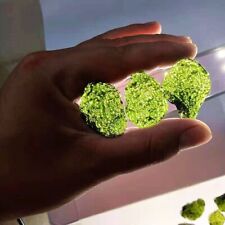
Chemical engineers at Purdue University have shown how to make yeast cells double the activity and boost productivity of a type of enzyme plants need to create important chemicals such as anticancer compounds.
The work is related to efforts aimed at developing techniques to use plants and microorganisms as natural factories for producing pharmaceuticals. Such techniques would be safer and more environmentally friendly than conventional methods for making drugs, which often require hazardous chemicals and steel “reactors” operated at high pressures and temperatures. The enzymes from plants and other organisms typically function in water near room temperature under ordinary pressure.
The Purdue researchers demonstrated that altering the nutrients and carefully controlling fermentation time caused yeast cultures to produce an enzyme called ferulate 5-hydroxylase that has twice its normal rate of activity, which increases the enzyme’s productivity.
Findings are detailed in a paper appearing in the journal Biotechnology and Bioengineering. The paper was written by Morgan and Purdue doctoral student Hanxiao Jiang.
The enzyme is a member of a family of enzymes called cytochrome P450, which plants need to produce numerous chemical compounds.
Plants ordinarily produce small quantities of “flavonoids,” which are beneficial chemicals known as antioxidants. So researchers are developing ways to boost production of the chemicals by transferring vital enzymes from plants to microorganisms. Because P450 enzymes are “biocatalysts” that enable an organism to produce the beneficial drugs, researchers are trying to develop techniques that cause plants to make greater quantities of the enzymes and enzymes that are more productive.
The method pursued by the Purdue researchers was to focus on a gene responsible for producing ferulate 5-hydroxylase.
Altering the composition of nutrients fed to the yeast cultures and controlling the fermentation time caused the gene to be “expressed,” producing 45 percent more of the enzyme while doubling the enzyme’s activity.
Increasing the quantity and activity of various cytochrome P450 enzymes might enable scientists to use plants and microorganisms like E. coli and baker’s yeast to one day commercially produce pharmaceuticals. More progress is needed, however, before it will be practical to use plants and plant enzymes in microorganisms as natural pharmaceutical factories, Morgan said.
“I wouldn’t consider this a major breakthrough, but it does represent significant progress in improving the expression of the enzyme,” he said. “I think there is certainly room for greater expression of these P450 enzymes.”
The same technique could be used to increase the production of other P450 enzymes, Morgan said.
“The plant kingdom contains a large and relatively untapped diversity of P450s that are needed to create thousands of valuable natural products,” he said.
In ongoing work, the Purdue researchers also are trying to develop methods for coaxing the enzymes to make drugs not normally produced by plants.
“We are feeding them what’s known as substrate analogs, or compounds that are structurally similar to the compound that this enzyme will normally recognize and react with but are somewhat structurally different,” Morgan said. “Therefore, if the enzyme recognizes this compound, it will produce a novel product, or a product that’s never been synthesized before.
“From a scientific standpoint, we want to better understand precisely how organisms make certain compounds, and from an engineering standpoint, we want to devise a strategy for manipulating the organism so that it makes the chemicals we want it to make.”


















Comments are closed.